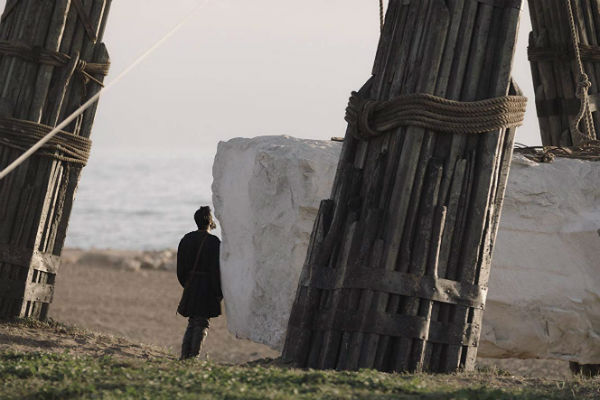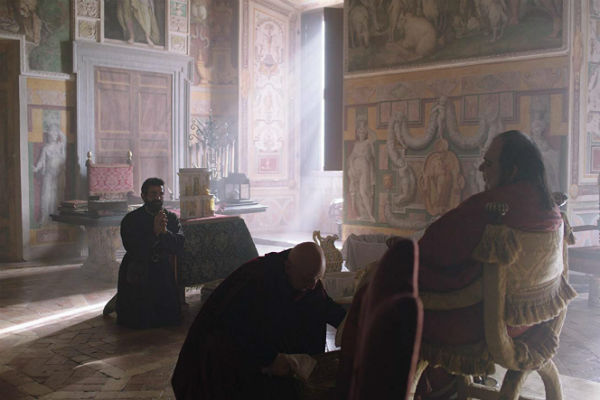Michelangelo is one of the world’s greatest artists. Whenever his name is brought up, we are immediately taken to the Sistine Chapel, one of the crucial papal conclaves in Vatican City.
It is there that the famed fresco – known as The Last Judgement – covers the altar wall, testifying to the creative powers of the Italian master and showcasing the best manifestation of the High Renaissance. With their beauty and richness, the many examples testify to the decorative powers of the Italian early 16th century’s art, born on the hands of names such as Leonardo da Vinci, Raffaello, Bramante and of course Michelangelo, under the patronage of the Catholic Church and the papal power.
The fruits of that era, in all their bounty, are well documented in thousands of books, films and television programmes; we see them on the covers of promotional material of the touristic industry. The power of creation, the decorative richness, the mesmerising paintings and shining marble sculptures the perfection of which shapes takes our breath away, the architectural grandeur… All that blinds us easily and justifiably, to the extent that we are no longer aware of the other side of the coin.
This is where Andrei Konchalovsky’s film Sin (Il Peccato), a biopic about Michelangelo Buonarroti shakes our glitter-covered perception on what High Renaissance looked like in Italy’s 16th century. The film unveils the deep connection between the constant rivalry that existed within the political-religious powers and the artists serving caprices of the temporary winners. Sin is a look into a grim history and into the real life of people trapped in manipulations and conflicts over dominance; it is a raw – and often cruel – image of cities drowning in lies and literal dirt on the streets.

Still from film Sin (Il peccato)
While following a fragment of the life, creativity, dreams and struggles of Michelangelo (played by Alberto Testone), we are overwhelmed by dirty hands, greasy hair, nails broken from work and faces covered with marble dust from the very beginning of the film.
As we walk through the cities of Rome and Florence, the samples of architectural and sculptural beauty are constantly obstructed by men who drink and quarrel in the taverns, stray dogs and children who run barefoot on the streets finding their way in between waste thrown off from balconies. The Carrara quarries from which Michelangelo extracts stones are the epitome of hard work, pain, sweat, and the reason of many fatal endings.
The “divine” Michelangelo, as he is referred to in the film, has just finished painting the vault of the Sistine Chapel and is now working on the Tomb of Pope Julius II commissioned to him by the della Rovere family from which Julius hailed.
With the sudden death of the Pope, the advent of the Medici to the Vatican and new Pope Leo’s commission to design a Basilica di San Lorenzo’s façade, Michelangelo remains involved in the long and ruthless conflict between two of the most powerful families in Italy.
Juggling with della Rovere and Medici, Michelangelo is driven by that sheer human desire to excel but at the same time, he is trapped between the two feuding families, forced to manipulate and lie, manoeuvring while trying to keep both commitments.

Still from film Sin (Il peccato)
While Sin is a story of a genius, the script by Konchalovsky and Elena Kiseleva – a duo that wrote scripts to many films by the Russian director – capitalises on the presentation of a man who lives in one of Italy’s most challenging historical eras. It is a story about creation and money – a fact which Michelangelo sums up brilliantly saying "where is money there is always infamy".
Konchalovsky focuses on expressing the sweat and fatigue associated with the extraction of the famous single block, called "the monster," and which is in the heart of all Michelangelo’s sins.
The film is about a man afraid of poverty, proud yet anxious, harsh but with a kind heart, strong yet at times feeling helpless. We see Michelangelo as a man with an inexplicable gift and shrewd ambition, a genius driven by greed and understandable desire to remain the best during times when da Vinci’s renown still lingers over many artists, while Pinturicchio, Pietro Perugino and above all Raffaello, attract many eyes.
Konchalovsky portrays Michelangelo as by numerous sins, among them pride and avarice. The same vices are highlighted by Dante Alighieri, the 14th-century poet in Inferno, the first part of his Divine Comedy which Michelangelo knew by heart and by which he was obsessed.

Still from film Sin (Il peccato)
The film had its MENA premiere during the 41st Cairo International Film Festival which ran between 20 and 29 November.
Born in 1937 to an artistic family (son of a famed communist poet Sergey Mikhalkov and an elder brother of an Academy award-winning filmmaker, Nikita Mikhalkov) Andrei Sergeyevich Mikhalkov-Konchalovsky is among the leading Russian film directors of his generation.
His 2016 drama Paradise was selected to compete for the Golden Lion at the 73rd Venice International Film Festival where he won Silver Lion for Best Director. The same film was selected as the Russian entry for the Best Foreign Language Film at the 89th Academy Awards.
The Postman's White Nights (2014) won the Silver Lion at the 71st Venice International Film Festival. Though the film was also selected as the Russian entry for the Best Foreign Language Film (2015), Konchalovsky withdrew the nomination.
For more arts and culture news and updates, follow Ahram Online Arts and Culture on Twitter at @AhramOnlineArts and on Facebook at Ahram Online: Arts & Culture
Short link: